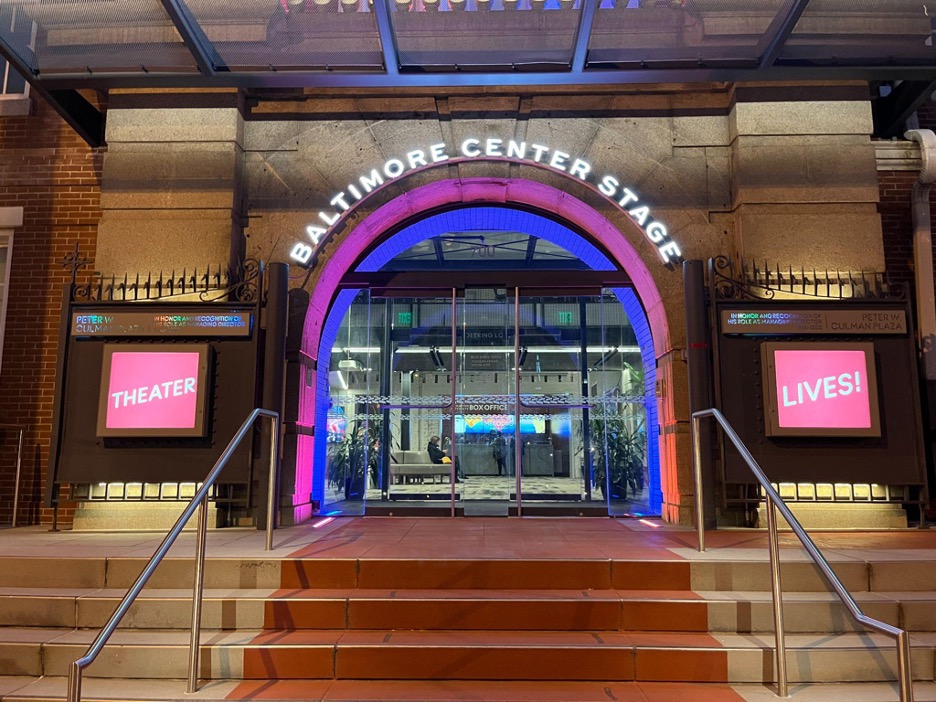On a foggy Wednesday morning, Alumni Chaplin Fr. Frank Nash opened the bright white colonial-style door, which serves as the entryway to Loyola’s recently acquired and renovated alumni house. The open house did not start until 11 a.m., but I had arrived early to take photographs of the outside.
“Can I help you?” he asks. I tell him I am not an alumni, but a student at Loyola, and a reporter.
He laughs and tells me that since I am not multiple people nor am I a man, and that even if I had graduated, I would be called an alumna. He invites me in and gives me the grand tour of the three-story brick colonial built in the late 1920s, which was renovated last year.
The house boasts a massive kitchen, sitting areas, a conference room, a reading room, multiple offices, handicapped accessibility and a rich history. It features photographs and paintings depicting the history of Loyola as a college and as a university, as well as books from both Hanway Lecture speakers, Colin Powell and Tony Blair, and several editions of the Evergreen Annual.
Located at 208 East Cold Spring Lane, the house is now home to the offices of Alumni Relations, Advancement events and Donor Relations, which are located on the second and third floors of the building. However, its primary function is to be a welcoming place for returning alumni.
“We wanted a spot for alumni to come back to campus,” said Chris Johnson, who is the assistant director of alumni relations and a 2007 graduate from Loyola. “A lot of universities have alumni houses. It’s going to be nice for use to host events.”
“On most campuses, an alumni house serves as a welcoming place, and for events,” said Dan Barnett, the director of Alumni Relations. “For campuses that don’t have an alumni house, they’re definitely missing an opportunity to meet with other alumni and reminisce.”
Barnett, who joined Loyola only nine months ago, previously worked in the office of Alumni Relations at Carnegie Mellon and helped to establish an alumni house there as well.
He explained that having an alumni house would serve to benefit not only the university and its alumni, but its current students as well. He said he hoped that students would venture over to the house to learn about the services and benefits for which they would be eligible after graduation, and that he plans to hold events at the house for current students.
“This will serve the University very well,” said Rev. Brian Linnane, S.J., who is president of the University and namesake of the house.
Loyola trustee and 1973 alumnus, John Cochran and his wife specified a portion of their donation to Loyola’s Bright Minds, Bold Hearts fundraising campaign to fund the alumni house. The Cochrans surprised Rev. Linnane by announcing they had named the building after him at the campaign’s kickoff event in December.
“It was shocking, but it was nice,” said Rev. Linnane.
Purchase and renovation of the house cost about $1.7 million, and took a year to complete.
“[We did] just about everything. There was extensive rot,” said renovation specialist Paul Kenney. “It just went to ruin. That’s what happens when you have a house that goes vacant.”
Kenney, who worked alongside a group of about six men, said that at the start of the renovation the conference room did not have a ceiling, and that the living area had a large hole in the ceiling as a result of considerable rotting and decay. Additionally, he said the team made keystones for the windows to match already existing ones, since several were missing from the building’s exterior. The men also made their own wall trim for all the rooms since it was too expensive to have them ordered and made.
Additionally, the team replaced windows, walls, ceilings, floors, light fixtures and the roof, and added a central air heating and cooling system.
“We needed a handicapped bathroom, so they built that as well,” said Allison Rubin, director of advancement events. Additionally, she said Les Pely, who graduated from Loyola’s undergraduate program in 1972 and later received his master’s degree from Loyola as well, was in charge of the construction project.
The house once belonged to Michael Harrison, who was the former general manger of Baltimore Opera Company that has been defunct since 2009. It had been abandoned for several years before Loyola purchased the property, however the house has long been intertwined in the history of the University.
It once belonged to the University, prior to being owned by Harrison, and was home to several professors, however the property was sold, it was said, because of the neighborhood agreements between Loyola and the Kernewood Association and the North Baltimore Neighborhood Coalition (NBNC), established in 1985.
While the house was occupied by Harrison, Loyola Financial Aid Counselor and graduate of Loyola, Tom Patterson and his mother lived in the house while Loyola still owned it as his father was a professor at the university. The house was later sold to Mr. Harrison. Both Patterson and his mother, Lorna, were present at the open house, and appeared to be happy about the renovations done to the house, and reminisced with visitors about their experiences while living there.
“It was so dark,” said Lorna Patterson, who also spoke to visitors about how she decorated the house with floor-to-ceiling mirrors on each side of the living room to give the appearance that there was more furniture, and said she took on the task of painting the entire house alone.
“I’m so glad it belongs to Loyola again,” she said.
Loyola was able to purchase the house once again with permission from both the Kernewood Association and the NBNC, despite the agreement that limits Loyola’s capacity for expansion of its property within the area. Because the house was vacant and needed significant rehabilitation, the associations determined that an alumni house would not cause parking or noise problems for the surrounding neighborhoods; the acquisition was seen as an improvement to the community.
The Rev. Brian F. Linnane S.J., Alumni House is open Monday through Friday from 9 a.m. to 4 p.m. and will be used to serve as a welcoming place for alumni and students to gather for special events hosted by Loyola.














































































































Lisa Potter • Jan 21, 2014 at 7:39 pm
Correction: Tom Patterson and his mother lived in the house while Loyola still owned it as his father was a professor at the university. The house was later sold to Mr. Harrison.